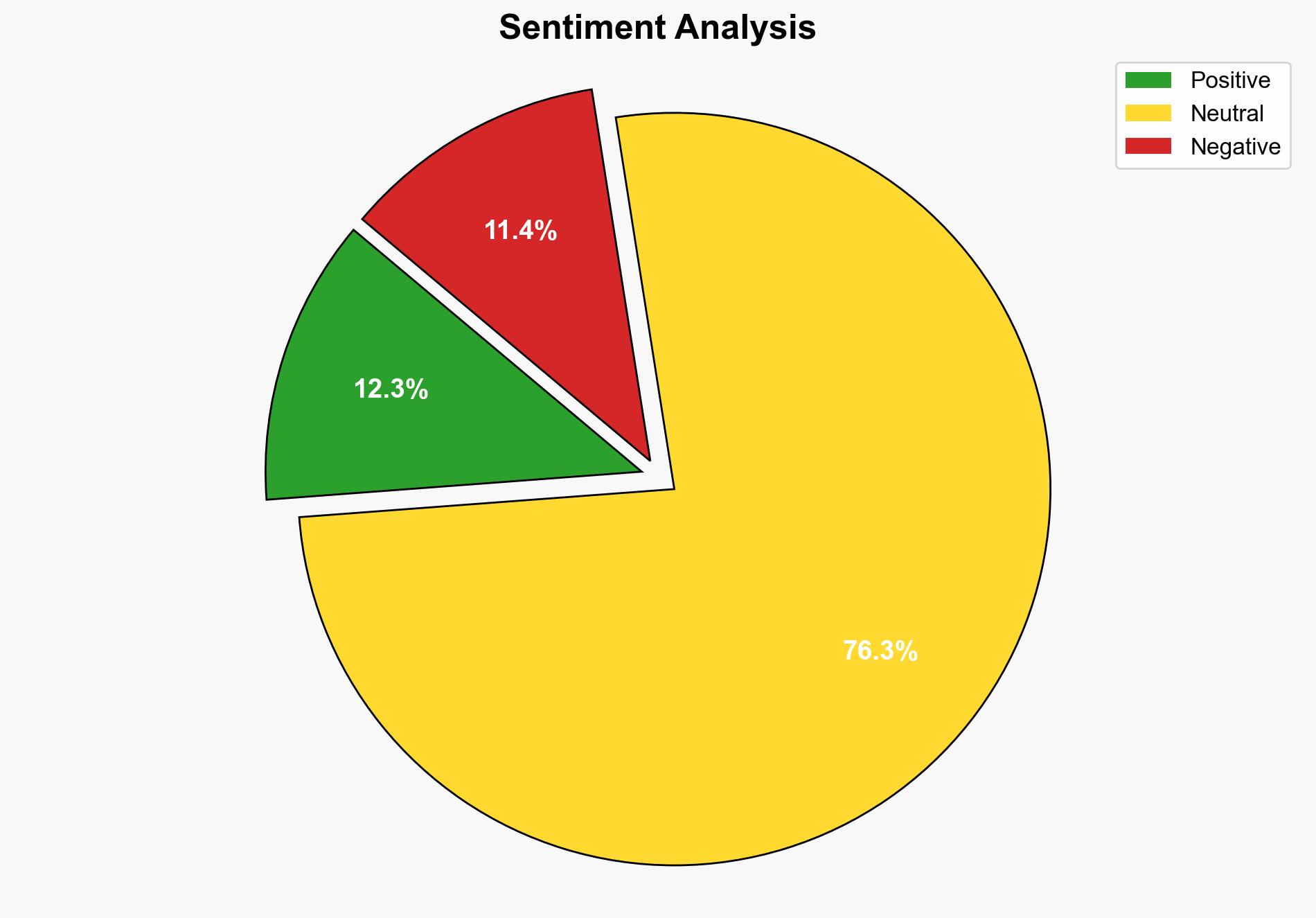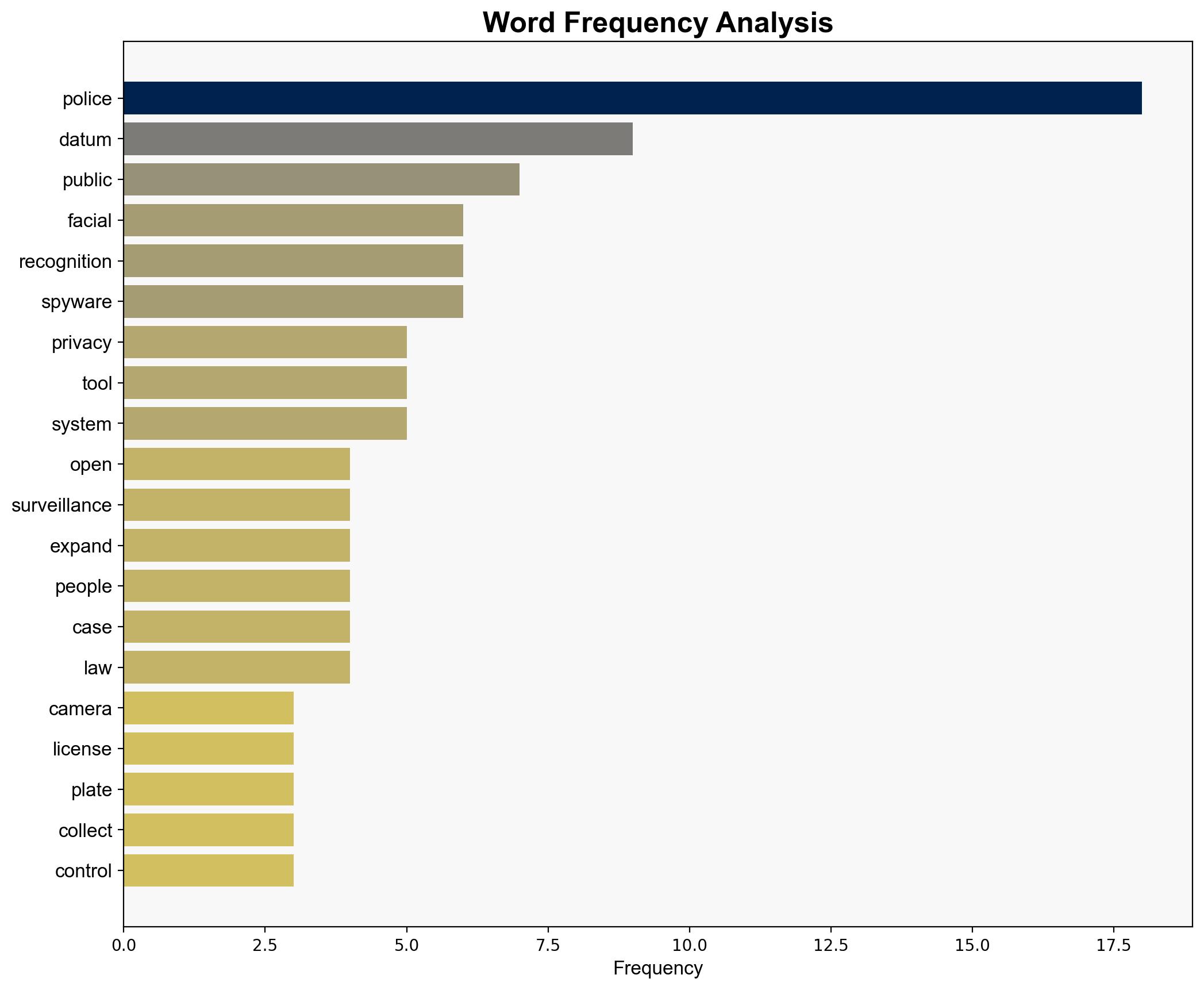How far can police push privacy before it breaks – Help Net Security
Published on: 2025-11-11
AI-powered OSINT brief from verified open sources. Automated NLP signal extraction with human verification. See our Methodology and Why WorldWideWatchers.
Intelligence Report: How far can police push privacy before it breaks – Help Net Security
1. BLUF (Bottom Line Up Front)
The strategic judgment is that the expansion of police surveillance capabilities poses a significant risk to privacy rights, with a high likelihood of public backlash and legal challenges. The most supported hypothesis is that without stringent oversight and legal frameworks, police use of surveillance technologies will lead to increased privacy violations and potential abuse. Recommended actions include implementing robust oversight mechanisms and legal standards to balance law enforcement needs with privacy rights.
2. Competing Hypotheses
Hypothesis 1: Police surveillance technologies will continue to expand unchecked, leading to significant privacy violations and public backlash.
Hypothesis 2: Increased public scrutiny and legal challenges will result in stricter regulations and oversight of police surveillance technologies, mitigating potential privacy violations.
Hypothesis 1 is more likely given the current trajectory of technology adoption without corresponding regulatory frameworks, as evidenced by the lack of specific laws governing police facial recognition in the UK and the absence of public documentation on data collection methods in the US.
3. Key Assumptions and Red Flags
Assumptions: It is assumed that police departments prioritize public safety over privacy concerns, and that current legal frameworks are insufficient to address the rapid advancement of surveillance technologies.
Red Flags: The absence of public documentation and oversight, as well as instances of data mishandling and leaks, are significant red flags indicating potential for abuse.
Deception Indicators: Lack of transparency in data handling and sharing practices, as well as the use of commercial spyware with minimal oversight, suggest possible intentional obfuscation of surveillance activities.
4. Implications and Strategic Risks
The unchecked expansion of police surveillance technologies could lead to widespread privacy violations, eroding public trust in law enforcement and government institutions. This may result in increased legal challenges, civil unrest, and potential international scrutiny. Cyber risks include data breaches and unauthorized access to sensitive information. Economically, legal battles and public backlash could lead to increased costs for law enforcement agencies.
5. Recommendations and Outlook
- Implement comprehensive legal frameworks and oversight mechanisms to regulate police use of surveillance technologies.
- Enhance transparency and public accountability by requiring detailed documentation and reporting of surveillance activities.
- Best-case scenario: Effective regulation leads to balanced use of surveillance technologies, maintaining public safety while protecting privacy rights.
- Worst-case scenario: Continued expansion without oversight results in widespread privacy violations and significant public backlash.
- Most-likely scenario: Incremental improvements in oversight and regulation, driven by public pressure and legal challenges.
6. Key Individuals and Entities
No specific individuals are mentioned in the source text. Key entities include police departments, government regulatory bodies, and civil rights organizations.
7. Thematic Tags
Cybersecurity, Privacy, Surveillance, Law Enforcement, Civil Rights
Structured Analytic Techniques Applied
- Adversarial Threat Simulation: Model and simulate actions of cyber adversaries to anticipate vulnerabilities and improve resilience.
- Indicators Development: Detect and monitor behavioral or technical anomalies across systems for early threat detection.
- Bayesian Scenario Modeling: Quantify uncertainty and predict cyberattack pathways using probabilistic inference.
- Cognitive Bias Stress Test: Structured challenge to expose and correct biases.
- Network Influence Mapping: Map influence relationships to assess actor impact.
Explore more:
Cybersecurity Briefs ·
Daily Summary ·
Methodology





